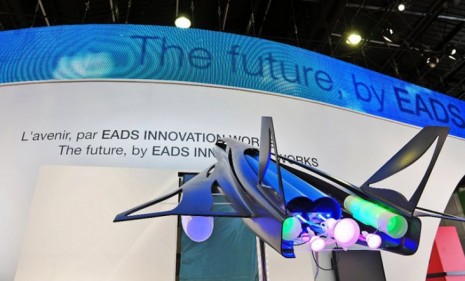Concorde 2.0: New York to London in an hour?
A new rocket-propelled successor to the supersonic Concorde is in the works. Is the Zero Emission Hypersonic Transport (Zehst) the future of flying?

European aerospace giant EADS, the company behind the AirBus, confirmed on Monday that it plans to build a hypersonic successor to the Concorde, which was retired eight years ago. The Zehst (Zero Emissions High Speed Transport) would be able to fly from Paris to Tokyo in 2.5 hours, or from the U.S. to the U.K. in an hour. Here's a quick briefing on the rocketplane of the circa-2050 future:
What exactly is the Zehst?
"Zehst could be the rocketplane that flies our kids around the world in the same time it takes us to drive to work," says Kit Eaton at Fast Company. The Zehst will have seven engines, including: Two that work like a conventional jet's; two "giant ramjets"; and three rocket-style engines similar to those in the space shuttle. With all those engine types, the Zehst sounds like the "airborne offspring" that would have resulted had the Concorde and the SR-71 Blackbird reconnaissance aircraft "got together in the 1980s." Key difference: The Zehst will be powered by biofuel.
The Week
Escape your echo chamber. Get the facts behind the news, plus analysis from multiple perspectives.

Sign up for The Week's Free Newsletters
From our morning news briefing to a weekly Good News Newsletter, get the best of The Week delivered directly to your inbox.
From our morning news briefing to a weekly Good News Newsletter, get the best of The Week delivered directly to your inbox.
Wait, it's powered by biofuel?
Yes. With "algae-based biofuels for take-off and landing" and rocket engines "powered by biofuels-based hydrogen and oxygen," the plane will be able to reach a speed of 3,125 mph (faster than Mach 4) and a cruising altitude of 20 miles above the earth, according to Jim Lane at Biofuels Digest. Bonus: Unlike the Concorde, which was "forever trailing a black cloud of smoke," according to Markus Karlsson at France 24, the Zehst will leave behind almost no environmentally damaging emissions.
What are the downsides to this design?
"Since Zehst needs to carry seven engines in various configurations" — and carry additional rocket fuel, too — "there's reduced space for passengers," says Eaton at Fast Company. The plane will only hold 50 to 100 passengers, so tickets "will probably cost quite a bit of coin." That means Zehst will likely target "business people who need to fly to a different continent in the morning and come back in the evening,” says EADS spokesman Gregor Van Kursell, as quoted by France 24. Another concern, says Eaton, is that this "complex design" could experience the same protracted, bumpy development process as the Concorde.
A free daily email with the biggest news stories of the day – and the best features from TheWeek.com
When will the Zehst take flight?
No time soon, even though EADS insists this is "no pie-in-the-sky experiment," says Eaton. Because it is based on existing technologies, materials, and designs, the "Zehst will hopefully be flying in prototype form by 2020" and carrying commercial passengers 30 years after that.
Sources: Biofuels Digest, Fast Company, France 24
-
 Democrats seek 2026 inspiration from special election routs
Democrats seek 2026 inspiration from special election routsIN THE SPOTLIGHT High-profile wins are helping a party demoralized by Trump’s reelection regain momentum
-
 Film reviews: ‘Bugonia,’ ‘The Mastermind,’ and ‘Nouvelle Vague’
Film reviews: ‘Bugonia,’ ‘The Mastermind,’ and ‘Nouvelle Vague’feature A kidnapped CEO might only appear to be human, an amateurish art heist goes sideways, and Jean-Luc Godard’s ‘Breathless’ gets a lively homage
-
 ‘Not all news is bad’
‘Not all news is bad’Instant Opinion Opinion, comment and editorials of the day